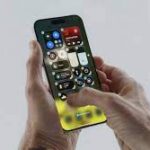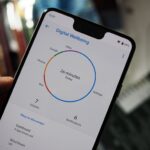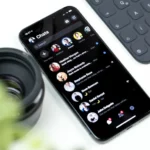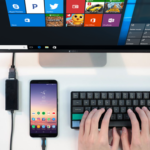What’s my top choice for an iPhone Selfie App? TikTok! Believe It or Not! Although I appreciate the extensive controls in my iPhone’s native Camera app, I seldom use it for selfies.

Instead, I’ve come to rely on TikTok for taking selfies and don’t see myself switching back anytime soon for several reasons.
Gain Greater Control Over the Flash
Lighting plays a crucial role in selfies, greatly influencing the outcome. In the native Camera app, the flash activates only when you press the shutter button—just as you take the photo. Conversely, TikTok lets you switch on the flash beforehand, creating a more natural lighting effect.
Although the flash remains directly on your face in the Camera app and TikTok, turning it on beforehand provides a better preview of your final selfie.
Sometimes, using flash can make images look terrible, and you often realize it only after taking the photo. If you’re like me and snap hundreds of selfies at once, this might become apparent long afterward.
By keeping the flash on before shooting, you can adjust your position or lighting to capture a better image right away, saving both time and effort in the process.
Zoom for Front Camera
When attempting to capture the perfect selfie, you might often zoom in and out to achieve the ideal framing.
One aspect I dislike about the native Camera app is its default wide angle, which offers limited flexibility for zooming in.
The expand icon on iPhones with an ultrawide front camera is the sole zoom control, but it’s not very effective.
In contrast, many third-party apps like TikTok offer significantly more flexibility, letting you zoom in further and perfectly frame your shot according to your preferences.
Natural-Looking Enhancements and Lenses
One of the main reasons I haven’t used Snapchat in months, even though it was once one of my favorite social media apps, is that it started influencing how I view myself.
Snapchat Lenses can completely alter your skin tone, unnaturally slim down your face, and conceal every blemish.
Although using them might give me a temporary boost in confidence, it would quickly vanish as soon as I removed the lenses.
This doesn’t mean I’m opposed to using beautifying options or filters in photos. There have been many instances where I’ve used Facetune to hide my eye bags or remove a blemish from my chin. My only concern is when these edits are taken too far.
TikTok manages to find the ideal balance with its lenses. They avoid looking excessively unnatural or completely changing your facial structure, while still enhancing your features enough to boost confidence. This allows you to maintain your natural appearance while adding a touch of flair to your selfies.
TikTok Doesn’t Automatically Edit My Selfies
I’m not claiming that the front cameras on my iPhone aren’t up to standard, but I do have a consistent complaint that’s not limited to just my iPhone 15 Pro Max. It mainly concerns the post-processing after taking a selfie.
Although you’ll appear amazing in the Camera app’s preview, Apple’s Camera app automatically edits your photos when you take them.
Unfortunately, it’s not very effective. Instead of making subtle enhancements to improve your image, selfies often look washed out with too much texture and detail visible, resulting in an over-processed appearance.
This occurs because of a built-in feature in the Camera app known as Deep Fusion, which automatically enhances photos.
Although there are some methods you can try to prevent your iPhone from auto-enhancing images, it is not possible to completely turn off Deep Fusion.
This leaves you with two choices: either accept the processed image or opt for using a third-party camera app instead.
As I noted before, TikTok is my preferred app because it doesn’t automatically edit my selfies. It captures the image exactly as it appears, preserving all the original details without any alterations.
If I want to modify my selfie afterward, I’ll use one of my favorite third-party photo editing apps.
Conclusion
Using a natural filter like this helps me avoid post-editing the photo, ensuring that I still appear genuine without giving off an impression of trying to deceive anyone or promote unrealistic beauty ideals.
I realize that using TikTok, primarily an entertainment app, to take selfies might seem unconventional. However, I recommend giving it a shot—you may end up enjoying it as much as I do!
I prefer TikTok for selfies due to its better control over flash, zoom, natural-looking enhancements, and lenses. They dislike the default wide angle of the native Camera app and its limited zoom control.
TikTok also offers a balance between enhancing features without being too unnatural or changing facial structure.
However, the author also complains about the auto-editing feature in the Camera app, which can result in overprocessed selfies. Despite these issues, the author remains loyal to TikTok for selfies.





